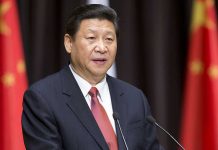
YouTube’s latest policy overhaul is set to gut the cash flow for mass-produced, AI-driven video content, but the real question is whether this move genuinely protects authentic creators or just tightens Big Tech’s stranglehold on what we can see and say.
At a Glance
- YouTube will demonetize “mass-produced” and “repetitious” video content starting July 15, 2025
- AI-generated, low-value, and recycled content are the primary targets of the new rules
- Channels repeatedly violating the policy risk removal from the YouTube Partner Program
- Definitions of “mass-produced” and “repetitious” remain vague, causing confusion and concern among creators
- This update mirrors broader industry anxieties about AI’s role in media authenticity and platform integrity
YouTube Declares War on “AI Slop” and Cookie-Cutter Videos
YouTube is set to launch a sweeping crackdown on July 15, 2025, targeting what it calls “mass-produced” and “repetitious” content. The platform’s new monetization policy is aimed squarely at the endless tsunami of AI-generated slideshows, recycled reaction mashups, and low-effort “remix” videos that have left viewers—and, let’s be honest, plenty of actual creators—feeling like they’re trapped in a digital junkyard. The company’s official statement claims the policy update will better reflect what “inauthentic” content looks like in today’s AI-flooded landscape, aiming to protect so-called authentic creators. The result? Any channel leaning on automation, auto-generated scripts, or synthetic voices without a real human touch faces demonetization. Repeat offenders could be booted from the YouTube Partner Program entirely.
The move comes after years of mounting frustration over YouTube’s inability—or unwillingness—to stem the tide of low-quality content factories. Viewers have grown weary of endless algorithm-chasing clones, while genuine creators have watched their revenues shrink as ad dollars were siphoned off by content mills. This major policy shift is YouTube’s latest attempt to reassert control, but with enforcement details still murky and definitions left intentionally vague, many creators are bracing for a new wave of confusion—and potentially disastrous overreach.
Who Wins, Who Loses? The Real Stakes Behind the Policy Shift
At its core, YouTube’s new monetization crackdown is a calculated move to shield its brand, appease nervous advertisers, and fend off legal headaches from copyright watchdogs. The platform, owned by Google, wields unilateral power—setting the rules, changing them at will, and leaving creators scrambling to keep up. Content creators, ranging from one-person educational channels to sprawling content farms, depend on YouTube not just for visibility but for livelihood. The new policy hits hardest at those relying on AI tools and mass production tactics: think channels churning out hundreds of similar videos with little more than a synthetic voiceover and a stock image slideshow. For these creators, the threat is immediate and existential—demonetization or outright removal from YPP means loss of income and, often enough, irrelevance.
Meanwhile, authentic creators—the ones actually investing time, thought, and originality—might stand to gain. With fewer AI-generated knockoffs cluttering the platform, their work could finally get the visibility (and ad revenue) it deserves. Advertisers, perpetually skittish about brand safety, will likely welcome any sign that YouTube is taking quality control seriously. But with the enforcement mechanisms still undefined, and past experience showing YouTube’s policing can be wildly inconsistent, the potential for collateral damage is sky-high. Small creators who use AI for efficiency—not spam—are left in limbo, unsure whether their livelihoods are about to be arbitrarily yanked out from under them.
Industry, Creators, and the Ongoing War Over “Authenticity”
The July 2025 policy overhaul is not happening in a vacuum. Across the entire media landscape, anxiety over AI’s ability to mass-produce content—good, bad, or misleading—has reached a fever pitch. YouTube’s update is part of a wider trend: tech giants are scrambling to address the reputational risks of generative AI, while lawmakers and watchdogs circle, eager to slap down platforms that look the other way. Industry analysts say that if YouTube’s move succeeds in raising the bar for monetized content, other platforms like TikTok and Facebook won’t be far behind with their own copycat crackdowns.
Expert opinions are deeply divided. Some argue the policy is long overdue, a necessary step to curb spam and restore a shred of quality to the world’s biggest video site. Others warn that the devil is in the details—YouTube’s notorious vagueness about what constitutes “repetitious” or “mass-produced” content leaves enormous room for error and abuse. Transformative creators, those who remix, commentate, or parody, worry they’ll get caught in the crossfire. Legal experts point out that YouTube’s new rules could also serve as a handy legal shield, protecting the company from copyright suits and regulatory probes, all while leaving creators to navigate an ever-shifting minefield of compliance.
Unanswered Questions and the Road Ahead
The policy’s scheduled rollout on July 15 has sparked a wave of anxiety among creators, many of whom depend on YouTube for income but have little faith in the platform’s ability to enforce rules fairly or transparently. The lack of clear definitions for “mass-produced” and “repetitious” content has led to speculation, confusion, and, predictably, a torrent of appeals and disputes. While YouTube insists authentic, transformative work is not under threat, history suggests that enforcement will be messy, uneven, and—let’s face it—probably favor large, corporate partners over the little guy.
This latest episode in YouTube’s ongoing struggle to police its own platform underscores a fundamental truth about Big Tech: when push comes to shove, it’s the everyday creators—and by extension, the viewers—who end up paying the price for Silicon Valley’s endless experiments in control. The new policy may well raise the floor for content quality, but only time will tell whether it also builds yet another wall between ordinary Americans and their ability to create, share, and prosper on the world’s biggest stage.










